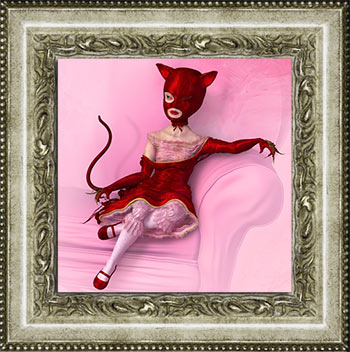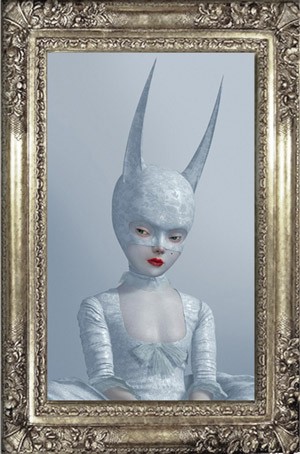Pop Surrealism

Ray caesar is considered one of the key-man of Pop Surrealism. This label, on one hand, fits like a glove, but on the other hand doesn’t fulfil the range of his poetics. Especially the most used synonym for Pop Surrealism, Lowbrow Art, is not compatible with the highly learned references of Caesar’s work.
His quotations range from the putative father of Surrealism, Salvador Dalì, with his swarming ants, crouches and drawers improperly placed on bodies, to Flemish masters, in the hyper-real and adamantine treatment of surfaces, and in the sparkling saturation of basic colours. Then there is the symbolic bestiary of the Gothic Era, with toads, spiders, insects, ravens, fishes and butterflies. We also have flowery tapestries of Biedermeier, monumental sky-lines of the Thirthies skyscrapers, and Fifties design.
Even the figurative taxonomy of his dolls has aesthetic roots in the history of arts, inspiring with the blonds of Cranach and their cruel almond-shaped eyes, and the dark-haired ladies with nkempt eyebrows of Frida Kahlo’s portraits.

But however he has some features which place him in the Pop-Surrealism movement: the bewitched lost childhood dimension, given by childlike features of his subjects, the fairy tale atmosphere, and the narrative quality of his works, emphasized by evocative titles, which open up the pictures on transversal meaning horizons.
In fact his last exhibition at the Lonsdale Gallery of Toronto is entitled The Tales We Tell. The attention for diversity is central in low-browers’ poetics, and we can also find it in the bearded woman of The Waiting Wife, in the thoughtful and metaphysical hydrocephalus of The Burden of Her Memories, in the numerous-legged freak of The Widow’s Tea Party, as well as in the romanticized biography of the artist, in which he asserts that he was born half-child and half-dog, and supports this theory with photos in Nineteenth-century daguerreotypes style.